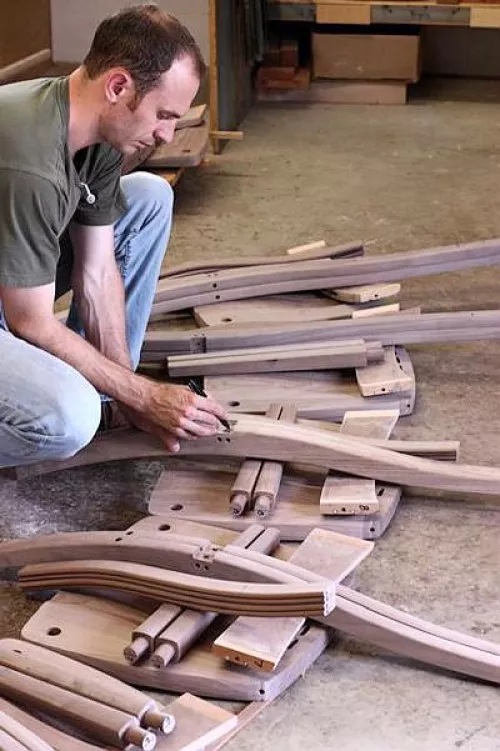Wood of the same species can, and does, vary from tree to tree. The growth rate affects the figure displayed by the growth rings. The soil, exposure, and other factors of the site affect the color. Genetics create differences site-to-site, tree-to-tree. We like to reveal these particularities, rather than obscure them by staining. But the variations are broad and deep enough that you can’t just pick up two pieces of walnut and stick them together. Or cherry. Or maple… To create a pleasing composition of color and figure in a piece of furniture, you have to carefully choose what goes together.
We build rocking chairs in batches of ten or so in order to have a lot of choices. Building dining chairs in sets provides choices. We can spread out lumber and mark each board for its best structural purpose and its best display of figure. Then we cut it up and work the front legs, the back splats, the crest rails, the seats, and all the other like parts together until they are ready to assemble. Now we choose what goes together. We spread out the ten or the twelve, or however many seats, on the floor in a semi-circle around the room. We pick up each crest and find the seat it best complements—on to the splats, the backlegs, and all. With plenty of choices, each chair can be made coherent, and individual.
We number the sets. We put the parts in a rack. We take the like numbered parts out and assemble chairs at whatever schedule the orders require.
Austin numbers the parts for walnut Williams chairs.

